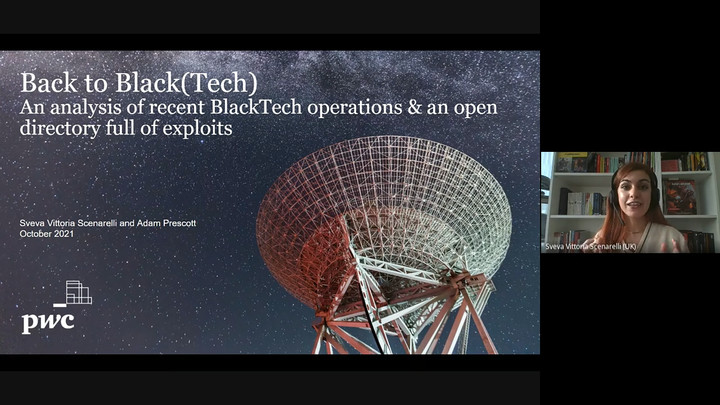Back to Black(Tech): an analysis of recent BlackTech operations and an open directory full of exploits


Downloads

Sveva Vittoria Scenarelli
PwCAs a senior analyst in PwC’s Threat Intelligence team, Sveva focuses on tracking advanced persistent threats based in the Asia-Pacific region, connecting malicious campaigns across time, malware and infrastructure. Sveva has previously presented at Virus Bulletin 2020, at CONFidence Online 2020, and at CyberThreat 2019 on BlackTech. Although her colleagues joke that her threat intelligence reports can be as long as university dissertations, Sveva’s specialty is deep-diving into the activity of threat actors over time to highlight how they change techniques and targeting.
Adam Prescott
PwCAdam is the lead reverse engineer in PwC's Threat Intelligence team. He focuses on C2 discovery by reverse engineering malicious communication protocols, and also malware archaeology – taking a malicious tool and tracing the development and usage of it back in time. In addition, Adam regularly publishes in-depth reports on complex malware families via PwC's Threat Intelligence subscription, including PwC's open-source research on WellMess in 2020. Previously, Adam spent over four years working for a UK government department focusing on vulnerability research of embedded systems.



 CTA TIPS
CTA TIPS  QI-ANXIN
QI-ANXIN 
